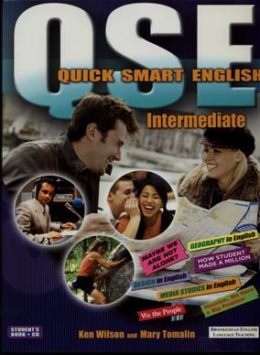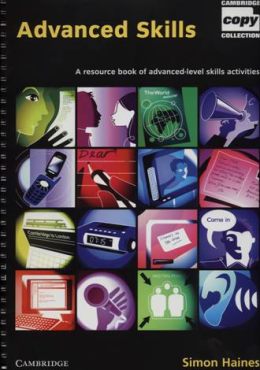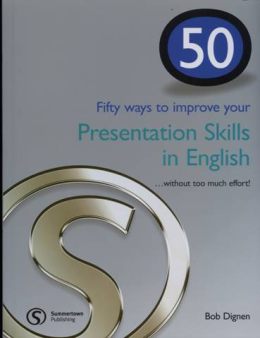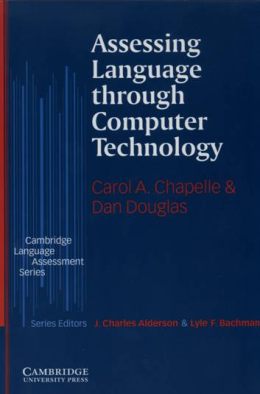Short Book Reviews
Hanna Kryszewska, Poland
Hanna Kryszewska is a teacher, teacher trainer, trainer of trainers. She is a senior lecturer at the University of Gdańsk, and EU Teacher Training College where she trains pre-service teachers. She is also Director of Studies at SWPS, Sopot, Poland. She is co-author of resource books: Learner Based Teaching, OUP, Towards Teaching, Heinemann, The Standby Book, CUP, Language Activities for Teenagers, CUP and a course book series for secondary schools: ForMat, Macmillan. She is also co-author of a video based teacher training course: Observing English Lessons. Hania is a Pilgrims trainer and editor of HLT Magazine.
E-mail: hania.kryszewska@pilgrims.co.uk

Hippo and Friends. C. Selby with L. McKnight. (2006) Cambridge University Press. ISBN 0-521-68010-7, 80pp; pupils book with tear-out activity worksheets. A song and story based course for the kindergarten and pre-school. Pupil's book complete with stickers. The whole course includes a teacher's book, story posters, flashcards, photocopiable extras, an audio CD and a Hippo puppet. The book is pleasant to the eye; the characters are lovable, the recordings ear friendly and the songs 'singable'. Apart from teaching the basics of English in a fun way, the course is rich in: 1. intelligence building activities e.g. pattern completion, matching, recognizing, completing sequences, 2. citizenship issues such as the role of friendship, the importance of family etc., 3. activities that require hand eye coordination, which are a playful preparation for writing, e.g. tracing, matching and drawing lines, and last not least 4. cognitive content e.g. counting, talking about the weather. An enjoyable course for the learners and the teacher.

QSE - Quick Smart English: Intermediate. K.Wilson & M. Tomalin. (2006) Brookemead English Language Teaching. ISBN 1-905248-04-0, 96pp; A4. A course for young adult and adult learners of English at B1-B2 level. According to the publicity material there are 3 levels in the series: pre-intermediate, intermediate and advanced. (One might wonder what has happened to the upper-intermediate level.) This is a course with emphasis on lexis and language functions. The selection of topics, as well as the visual materials, certainly stimulate the learners and the teacher, e.g. in "Do animals have feelings" we can read about cruel hunting for animals as well as seeing photos of a dog used in testing for burns in a laboratory, or a gorilla's head ready for cooking in a kitchen bowl, the real, uncensored stuff. The authors use authentic sources which have a global ring to them and very often use authentic photographs, distinct from the usual cheap stuff, downloadable from the Internet Photoshop bank. Very good choice of cross-curricular topics such as economics and law and good ideas for the portfolio. Interesting design with a language bank on fold-out cover flaps. Good foundation course for a number of recognised language exams. I just wonder what it sounds like when the students say: I learn from QSE…

Advanced Skills: a resource book of advanced-level skills activities + CD. S. Haines. (2006) Cambridge University Press. ISBN 0-521-60848-1; 138pp, spiral bound; A4. A collection of 36 photocopiable activities for all four language skills: reading, listening, speaking and writing. Each topic e.g. "The Unexpected" is covered separately for each language skill. We can use the worksheets in isolation to supplement our lessons or build integrated skills lesson, even thematically related lesson sequences. This book covers a wider range of well chosen topics, from the psychology of management, e.g. "The qualities of a successful manager" (in the section "Women a the top") to history e.g. "The nature of coincidence" ( in the section "What a coincidence"). The material is user friendly with detailed teacher's notes and an answer key. Every teacher will find something suitable for their class. Some of the texts are also suitable for lower levels such as Upper Intermediate and FCE classes, so before your decide to use a section from the book in class make sure it will be taxing enough for your learners. Also dip into the book if you teach lower levels than advanced. Teachers may be able to use the material with lower levels as they can adapt it or use it as a guideline to producing your own.

Fifty ways to improve your presentation skills in English … without too much effort!. B. Dignen. (2007) Summertown Publishing. ISBN 978-1-902741-86-4; pp.149. The book provides ideas and activities how to improve your presentation skills. It is a book to be used on your own, step by step. It is so clear and user friendly that you simply glide from task to task and section to section. In each area, e.g. planning ( in "It's all about planning") the reader becomes familiar with the problem area and then goes through a number of tasks and a reflection process by answering the questions in the section Ask yourself and then memorising the Hot tips. On a regular basis there are Test yourself tasks which take a different form and sometimes ideas for a Learning diary. The author occasionally uses diagrams and well chosen cartoons to illustrate his point. Sections 46-50 deal with the language of presentation, sections from which even the most seasoned presenter would benefit. It seems that the book is mainly aimed at people in business and those dealing with customers. Yet some of the sections would be appropriate for academic English, CLIL, IB or study skills courses. Personally I would like to use it in class with future or practising professionals. But I will have to find a way to adapt the self study mode for class use.

Assessing Language through Computer technology. C. A. Capelle & D. Douglas. (2006) Cambridge University Press . ISBN 0-521-54949-3; pp137. The last decade has seen a significant progress in the field of computer based or computer-assisted language testing (CALT). More and more tests can be taken in this form, and the Internet is full of them. The interesting thing is that thanks to modern technology the test format no longer needs to be closed questions only, as now CALT has expanded to open questions, and is used for written and oral testing. The publication is the first in the series and it provides an overview of the field, some examples of CALT and practical guidelines, e.g. general considerations regarding a certain type of test, its overall design, points to consider, advice for designers, technical information etc. It is a very honest publication which outlines the advantages and disadvantages of CALT, compares CALT to other proficiency testing systems, analyses the threats of CALT. Although the book is a thorough academic publication it reads very well and is very accessible. It has a very good subject index and an impressive reference list, which will be invaluable to anyone interested in the field. The publication will interest teachers into testing, self assessment, blended learning and new trends in language teaching, but requires some basic knowledge in these areas.



|